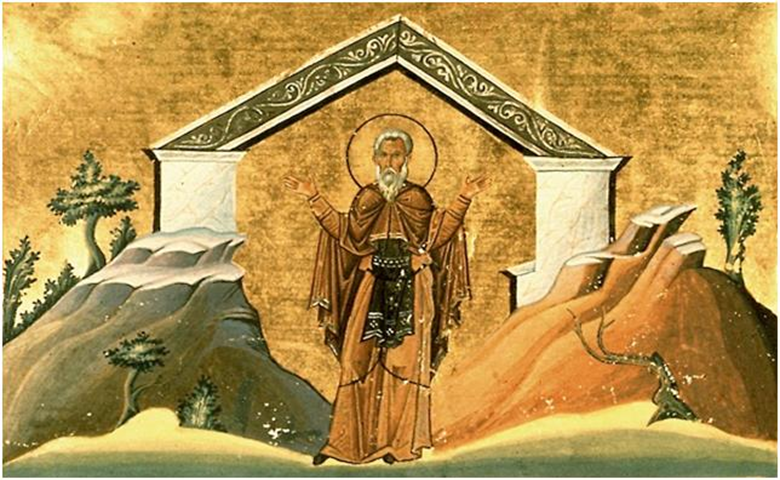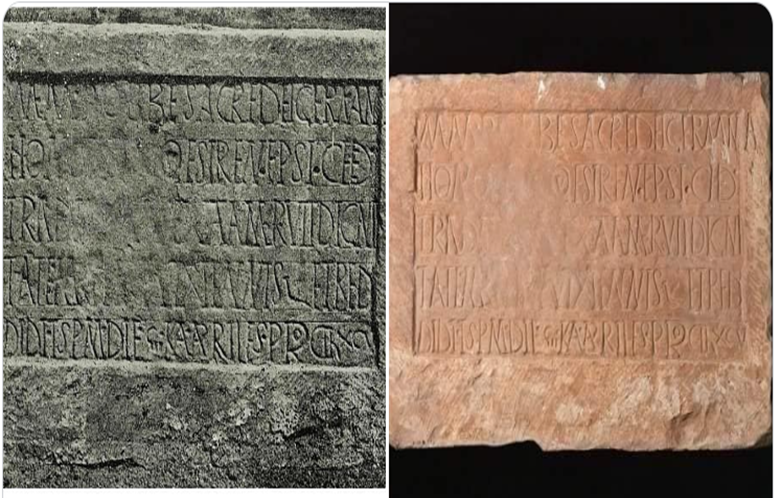Donatus

Donat le Grand (Latin: Donatus Magnus). Donatus was born in the third century AD in Nerine, Tebessa Province, and is considered one of the most important barbarian leaders who confronted the Romans with all his knowledge and power.
He is also one of the most important defenders of the Christian faith in the Amazigh community. He is a priest and monk in a Amazigh village. He later became a bishop and a major religious leader in North Africa, and he has many followers who defend the doctrine that he founded in theory and practice.
He is also the author of a religious book entitled “The Holy Spirit,” as he is the leader of the Donatist religious doctrine that was formed in the midst of the ongoing church conflict at that time. All those who rejected Roman control fell under this doctrine, including the doctrine of the “Romanists” and the Firmus Revolution, which raised the banner of disobedience, revolution, and rebellion against the Roman government. Donatus died in 335 AD. The development of the Donatus Revolution: The Donatist revolution appeared in North Africa, specifically in Numidia, except when the emperor adopted Roman Theodosius The Christian faith was the official religion of the Roman state since the beginning of the fourth century. Donatus took advantage of the opportunity and founded an independent Amazigh Christian sect, which is the “Donatist sect.”
The Amazighs accepted this new doctrine to get rid of the yoke of Roman colonialism, injustice, injustice, slavery, humiliation and shame. This is what made the Amazighs give their church a national character to defend the demands of the local population and protect them from the tyranny of the Roman forces and the tyranny of the exploiters of the aristocrats and the Roman Catholic clergy. Then, as mentioned above, Pastor Donatus formed a revolutionary religious, social and political movement that played an important historical role.
Donatus broke away from the Christian doctrine that the Roman Emperor Theodosius wanted to impose on the peoples under his rule since he adopted it. This schism caused many bloody confrontations between the church and the emperor’s army, allied against Donatism and the rural revolutionaries who found in this movement an outlet to defend their existence, which continued almost until the Vandals came to the north. Africa in the year 439 AD. As part of his religious revolution, Donatus led a group of Amazigh churchmen who rejected Roman authority, which led to the so-called Donatist Revolution, named after Donatus. This religious Donatist movement is characterized by its Amazigh character Rebellious against Roman rule and official church teachings.
Accordingly, Donatus was calling for a new religious doctrine based on establishing equality among people, working to help the poor, and not recognizing any authority other than the authority of the Creator God. He was ordering the Amazighs to expel the large landlords from their lands and the influential Catholic Christians from their country. Donatism spread in many Amazigh states and kingdoms, especially in the state of Africa and the state of Numidia, and a group of military organizations were formed on the ground that were attacking the farms of the Roman aristocrats to liberate their oppressed slaves and serfs. However, there are researchers who divide the Donatist movement into two groups:
A Donatist group exploits religion to achieve its personal interests and goals. It is a gang of brutal Amazigh slaves who revolt, rape, and plunder in order to achieve their material ambitions. Another group of Donatists who preserved their moral principles and religious beliefs seize the opportunity to confront the Romans within a reasonable and acceptable religious and political vision.

In this regard, Ahmed Tawfiq Al-Madani, the Algerian researcher, says: “When the bishop of Morocco, called Mansurius, died, a dispute arose over the nomination of his successor, and the Saslian monk was nominated for that, but the supporters of the sedition refused to agree to this nomination, and the leader of the opposition was a Amazigh village monk named Donate. A group of the most fanatical Donatists then formed and began to roam the outskirts of the country under the pretext of including all Christians. Most of these Donatists were former slaves and those who had nothing in this world except their bodies, so they adopted a social doctrine for themselves that was a mixture of communism and anarchism. They say that they want to establish the principle of complete equality in livelihood among people, and that they do not recognize any authority, and they also began to roam and became a gang of plundering and plundering, committing atrocities and carrying out sacrifices.
Nothing remained of their religious character, so Roman soldiers pursued them and cut them off at the end of the fourth century, but the true Donatists, most of whom were Amazighs, maintained their strength and solidity, waiting for an opportunity to pounce on their enemies. Their movement was political, aiming for liberation, disguised as a religious movement. .
The greatest cause of this agitation is the Roman colonial regime, which owned the land in the hands of a beneficial group and deprived the community of people of it.” It becomes clear to us from this that Donatism is divided in its nature into two movements: a revolutionary, terrorist, communist, anarchist movement, and a moderate, militant religious movement that is rational in its strategic plans in dealing with the Romanian forces.
But Donatism, in its essence, is a social movement that defends the poor and the oppressed and stands against the aristocratic feudal lords who seized the finest lands and turned their Amazigh owners into slave slaves. Just as the Catholic clergy exploited their religious authority in North Africa, they began to plunder the barbarians’ wealth and control the Amazighs’ property and wealth, turning them into slaves. Humiliated slaves without land or shelter, leaving them with hungry stomachs searching for bread in vain. This is what produced the “Al-Dwarin” movement, and sparked the Donatist revolution calling for equality and radical change by expelling the exploiters from the Tamazgha lands.
But the Roman exploiters were quick to defend the Catholic doctrine represented by Saint Augustine against the Donatist doctrine, which was a social and revolutionary ideological doctrine that believed in action and change and exposed Roman domination. This religious conflict caused bloody confrontations: “It clearly reflected the social conflict in the states of Rome, and this is evident in the fact that the Emperor and the Roman state, and behind them the major landlords, supported the official Catholic Church against Donatus and his Amazigh followers, and they persecuted them because the principles they embraced posed a threat to their privileges,
This is because Donatus, who embraced the issues of the poor and the oppressed, called for the expulsion and expulsion of the evil ones - by which he meant the major landlords, usurers, and influential people - from the Christian community. Thus, Donatism was the doctrine of the revolution sparked by the Amazighs, and its flames continued until the demise of Roman rule, and the Roman persecution and persecution only increased the roots of Donatism and its followers. They clung to its teachings, because it expressed their pain and their hopes for justice and equality.” With the Donatist revolution sweeping many North African states and rapidly spreading among the poor and weak Amazigh, the Roman government decided to strike at the hands of the Donatists and eliminate them once and for all.
Therefore, Rome sent its best army commander, accompanied by powerful military forces, in the year 411 AD to persecute the Donatists. He dispersed them forcefully and violently, eliminated the followers of this religious movement, and handed over its properties and churches to the Catholic Christians, at the same time when the Roman Empire was on the verge of collapse and decline. Results of the Donatist Revolution: One of the results achieved by the Donatist Revolution is that the Amazigh resistance in North Africa will go beyond military resistance to another type of resistance represented by religious and social struggle.
The Amazighs will fight the Christian Roman Empire with the same ideological weapon to get rid of the yoke of colonialism and combat oppression and exploitation. The Donatist revolution will ignite many revolutions and strife, and will contribute to the emergence of many groups rebelling against Roman authority, especially what is known as the “rotating” revolutionaries who were circling the grain stores wanting to steal them because of hunger and great poverty. This, this Donatist movement contributed to the decline of the Roman Empire and the fueling of religious conflict and the struggle between the two authorities: religious and political at the central level in the Roman capital, and the emergence of doctrinal conflict between Donatism and the Catholic faith.
In this regard, Abdullah Al-Aroui says: “Moroccans flocked to the dissident Donatist movement (named after Bishop Donat) and gave their church a clear nationalist character without any regard to the concept of Catholicism, that is, community, the focus of every Christianity that has adapted to the reality of social disparity. For a whole century, the Donatist Schism caused many bloody confrontations. On the Catholic side, Augustine led the battle, relying entirely on civil authority and benefiting from the terror that seized the major landlords because of the social revolutionary goals contained in the Donatist movement.
Augustine was victorious in the year 412 AD, but he only enjoyed the victory for a short time. The Vandals, who were loyal to the Arius heresy, took control of North Africa in the year 439 AD, and they used the same violent means against the Catholics that they had used against the Donatists. The African Church took revenge for itself in the end, by summoning the Byzantines and helping them expel the Vandals, but with the region’s return to the fold of the empire, the Church lost the independence for which it had been fighting since the middle of the third century.”
Despite the Roman attack on the Donatists to eliminate them, and the resulting dispersion of their unity and the persecution of their revolutionaries, Donatism remained a religious tendency and a massive revolution in which all Amazighs believed.
Consequently, the Roman forces could not erase Donatism from the hearts of the Amazighs who believed in it in mind, conscience, emotion, and practice. In this regard, Mohamed Boukbut, the Moroccan Amazigh researcher, says: “The Romans launched a relentless war against the Donatists as they were the instigators of the revolutionaries, but the result was the opposite of what the Romans sought, as Donatism took root among the Amazighs as an expression of their insistence on adhering to their identity and preserving their distinct entity.” The Roman occupiers, and hence, Donatism was a sectarian and social reaction on the part of the Amazighs against the intellectual and religious templates in which the occupying institutions, the state and the church of the Amazighs’ in-laws, were seeking to contain them and obliterate their identity.” thus, It seems to us that the Donatist movement contributed greatly to the deterioration of the Roman Empire and caused its rapid decline, to be replaced by the invading Vandals and the hostile Byzantines.
Source: websites

